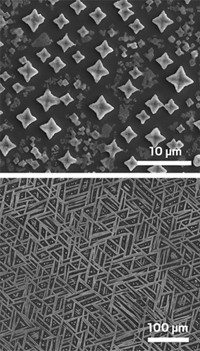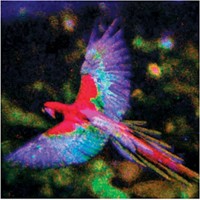Advertisement
Grab your lab coat. Let's get started
Welcome!
Welcome!
Create an account below to get 6 C&EN articles per month, receive newsletters and more - all free.
It seems this is your first time logging in online. Please enter the following information to continue.
As an ACS member you automatically get access to this site. All we need is few more details to create your reading experience.
Not you? Sign in with a different account.
Not you? Sign in with a different account.
ERROR 1
ERROR 1
ERROR 2
ERROR 2
ERROR 2
ERROR 2
ERROR 2
Password and Confirm password must match.
If you have an ACS member number, please enter it here so we can link this account to your membership. (optional)
ERROR 2
ACS values your privacy. By submitting your information, you are gaining access to C&EN and subscribing to our weekly newsletter. We use the information you provide to make your reading experience better, and we will never sell your data to third party members.
Materials
Improved Fabrication Of Crystalline Films
by Stephen K. Ritter
October 6, 2008
| A version of this story appeared in
Volume 86, Issue 40
Researchers in Japan have developed a simple method for preparing rare-earth hydroxide films by trapping crystallites of one such material at a solvent interface and then uniformly transferring them to a substrate (Chem. Commun., DOI: 10.1039/b812111g). The resulting films are of much better quality in terms of orientation and coverage than crystalline films prepared by traditional methods, such as solvent evaporation or spin-coating. Takayoshi Sasaki of the National Institute for Materials Science and coworkers had previously synthesized Eu(OH)2.5Cl0.5•0.9H2O, which forms micrometer-sized platelike crystals. The team's film-fabrication method begins by dispersing the crystallites in water and then adding hexane, which results in a two-phase system. When a few drops of ethanol are added, the crystallites form a monolayer at the water-hexane interface. When a pretreated substrate is dipped into the solution, the crystallites adhere to the substrate, forming a monolayer film; multiple layers are deposited by repeatedly dunking the substrate. Subjecting the film to ultrasound treatment serves to create uniform layers of the large crystallites. Well-organized films of the type made by the Japanese team, which are photoluminescent and readily undergo anion exchange for further modification, have potential applications in optical devices and chemical sensing.






Join the conversation
Contact the reporter
Submit a Letter to the Editor for publication
Engage with us on Twitter